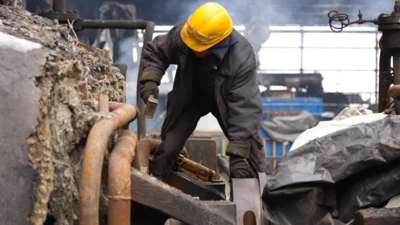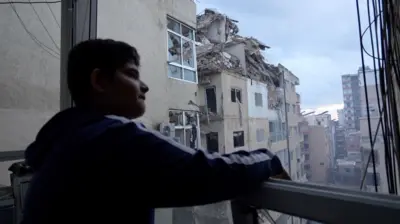We've updated our Privacy and Cookies Policy
We've made some important changes to our Privacy and Cookies Policy and we want you to know what this means for you and your data.
Hawaii volcano: Man hit by lava in first serious Kilauea injury
Top Stories
The first serious injury has been reported as Hawaii continues to grapple with weeks of volcanic eruptions and lava flow.
The injured man was sitting on a balcony at his home when "lava spatter" - projectile molten rock - landed on him.
"It hit him on the shin and shattered everything there down on his leg," a spokeswoman for the county mayor said.
Lava spatters can weigh "as much as a refrigerator", she told Reuters.
The Kilauea volcano on Hawaii's Big Island erupted at the beginning of May, and the situation for residents has steadily been worsening.
Top Stories
On Saturday, a key coastal road used as the main escape route for residents was in danger of being cut off, which could hamper evacuations.
The possibility of the lava flows reaching the ocean, meanwhile, threatens to release toxic gases in a plume called a "laze".
When molten lava hits sea water, the chemical reaction can create "hazy and noxious conditions" laced with hydrochloric acid and tiny particles of glass, the US Geological Survey (USGS) says.
"Even the wispy edges of it can cause skin and eye irritation and breathing difficulties," USGS warned.
Top Stories
Growing flows
Some of the lava flows have increased over the weekend.
The Hawaiian Volcano Observatory said that the rate of eruptions increased in the area known as the lower east rift zone, where four fissures have merged together.
The result is "a continuous line of spatter and fountaining". Two different lava flows from the combined fissures have now merged less than a mile from the coast.
Geologists are warning that the behaviour of the lava flows remains unpredictable, and are urging residents to obey all warnings from Hawaii's civil defence.
Image source, EPA
At the summit, a large explosion happened at around midnight on Friday night into Saturday, sending a plume of volcanic gas some 10,000 ft (two miles, or 3km) into the air.
Thousands of people have already left their homes in some areas of the island. Bush fires have also broken out in several areas.
"It is a very dynamic situation," geologist Carolyn Parcheta from the observatory told a news conference, while warning of the risk to one of the main residential areas.
Lava "flooded around the east side of Lanipuna Gardens, and to me that is a very scary scenario," she said.
"That's what concerns me most - is that people might be trapped by something like that."
Despite safety concerns in some residential areas - and worries that volcanic ash could interfere with air travel - Hawaii's business community has stressed that many tourist activities remain open, as do the island's airports.
Top Stories
More to explore
Most read
Content is not available








